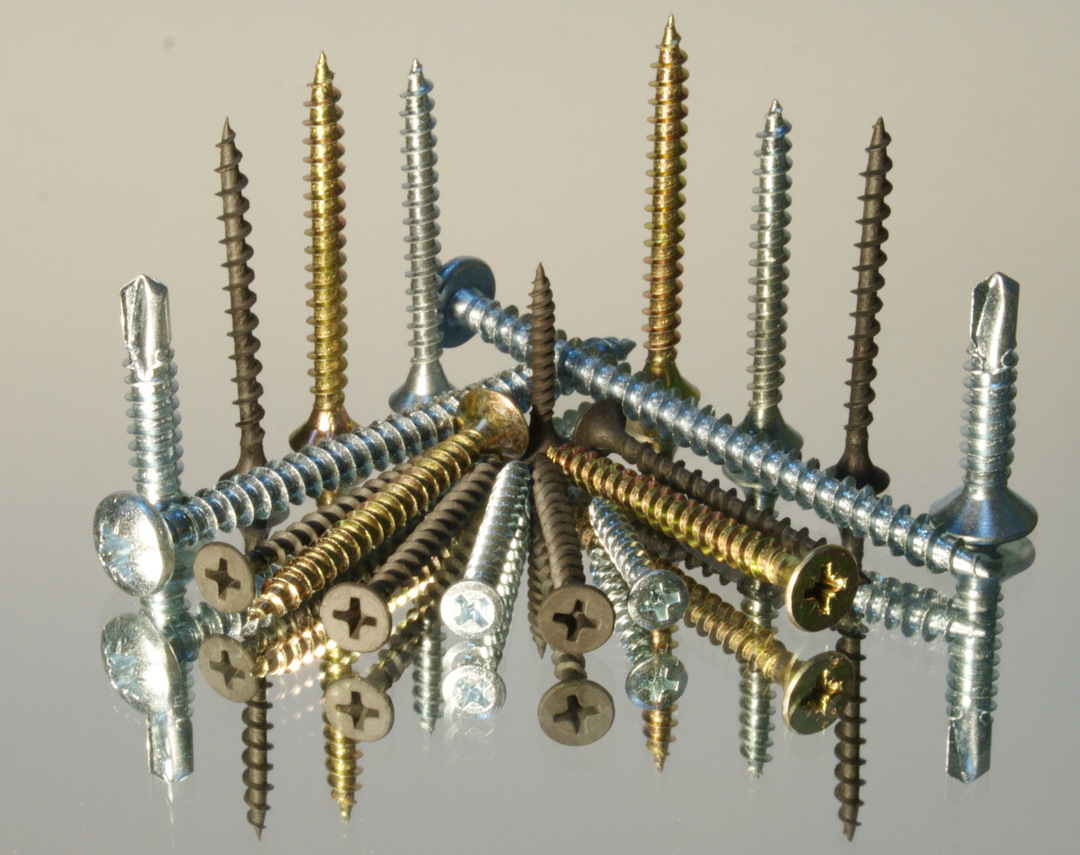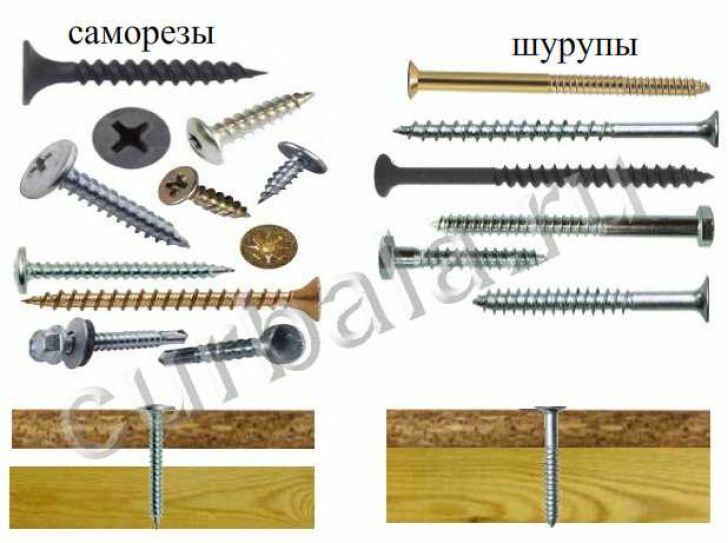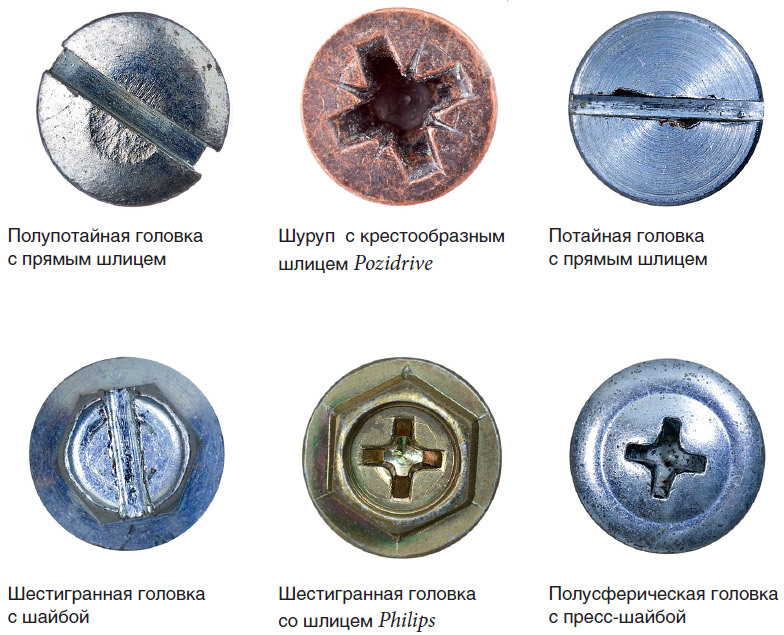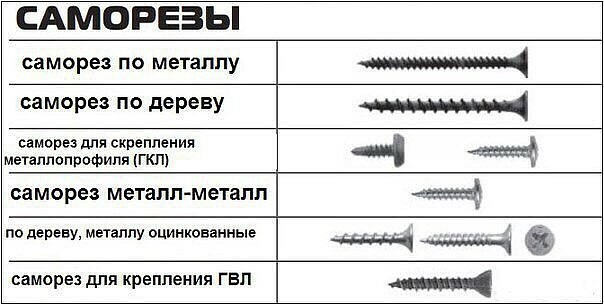Modern fasteners are practical and easy to use. A striking example of this is a self-tapping screw, which is also a self-tapping screw. In most cases, the product does not even require pre-drilling.
What is this miracle of technology and what types of it are in nature - read below.

What is a self-tapping screw
The content of the article
- What is a self-tapping screw
- Self-tapping classification
Outwardly, the product resembles well-known to the majority screw, that is, a cylindrical rod with a thread on it and a head. Thread has the shape of a triangle and serves to hold the fasteners in the connected object. The fundamental difference with the screw is only that the thread of the self-tapping screw runs along the entire length of the rod.
On the head, as a rule, there is slot under a screwdriver or screwdriver. Some varieties, for example roofing, do not have a slot - their head is made in the manner of a bolt and they are screwed in with a wrench of the appropriate size.

Self-tapping classification
There are plenty of signs by which self-tapping screws can be divided into different groups. Let's start with material of manufacture:
- brass;
- made of stainless steel;
- made of carbon steel.
Plus brass - it is less susceptible to corrosion than steel. Minus - it is much softer, and the slot on the heads of such fasteners "licks off" with a bang. The most optimal, but also expensive option is stainless steel.

Let's go further - they use coating of the following types:
- phosphating;
- oxidation;
- galvanized.
The first two types of coating are black, galvanized is available in white and yellow. There are uncoated self-tapping screws, usually made of stainless steel.
By screw head designs distinguish between:
- secret and semi-secret;
- semicircular with and without a press washer;
- cylindrical or hexagonal;
- the shape of a truncated cone, affectionately referred to in the common people as a "bug".

Slots are also different:
- straight;
- cruciform standards Ph (Philips) and Pz (Pozidriv);
- in the form of a hexagon;
- the so-called anti-vandal options in the form of various stars, triangles or other geometric shapes that require an exotic special key to unscrew.
Threads are classified into rare or frequent, single or double threads. The end of the self-tapping screw can be sharp or blunt (confirmation), or it can be made in the form of an independent drill.
Classification by purpose:
- For metal with a sharp end —Made, as a rule, of carbon steel, have a frequent thread pitch. This is the most striking distinctive feature, since wood carvings are much less common with self-tapping screws. The rod diameter is usually 3-5 mm and varies depending on the total length of the screw. The same is the case with the thread pitch - the longer the fastener, the less frequent it is. If the thickness of the metal sheet to be fixed is less than 2 mm, then it is not necessary to pre-drill a hole in it. With a thicker sheet, it is recommended to drill with a drill a couple of millimeters thinner than the diameter of the self-tapping screw.
- For metal with a drill bit. There are two striking distinctive features of such products - the shape of the head (conical or press washer) and (oddly enough) the presence of a drill. This type of self-tapping screws allows you not to use a drill at all, and the shape of the head ensures their secure fit to the fixed surface. Self-tapping screws for metal, as a rule, are covered with a glossy protective sheath in black, yellow or white.
- By wood - similar to self-tapping screws for metal with a sharp tip, differ from them in a rarer thread pitch. Their coating is both matte and glossy, according to the color scheme it can be yellow, black or white. Their length can be up to 200 mm. The rare pitch and large thread size are due to the relatively low density and heterogeneous structure of the wood. The coarse thread allows you to securely hold the self-tapping screw in the part. By the way, in hard types of wood, such as oak, ash, hornbeam or acacia, I strongly recommend pre-drilling, no matter what manufacturers tell about their miracle products. Otherwise, the heads of self-tapping screws often simply do not withstand the torque and break off. This type of fastener is widely used, in addition to wood, when working with plastic.

- Furniture confirmations - as the name implies, they are used in the assembly of furniture from chipboard. Characteristic features are a blunt nose, a large thread with a relatively thin head and a hexagonal slot. They are screwed into a previously prepared hole with a slightly smaller diameter than the thread. This is done with a special wrench or a hexagonal bit for a screwdriver. A decorative plug is usually placed on top of the confirmation head so that it does not catch the eye against the background of a laminate, often imitating the texture of valuable wood species.
- Universal Hex Head - as a rule, they are used in connection points for which a large load is provided. Outwardly, they have some resemblance to a bolt, but there are no nuts on them. They are used for fixing in wood, and complete with a dowel - in concrete. The dowel is selected with a diameter of about two screws. Tighten such fasteners with a wrench corresponding to the size of the head.
- Roofing. Distinctive features - the presence of a hex head, a rubber seal for sealing the hole and a drill bit. The head is made, as a rule, for an 8 or 10 mm wrench, and painted in the color corresponding to the roof. Such self-tapping screws are often supplied immediately complete with metal tiles. Their length is 19-100 mm.
In some sources, the so-called self-tapping screws for drywall are cited, but this classification is fundamentally incorrect, since here there is a fastener for metal and gypsum plasterboard, double-threaded.
Subscribe to our Social Networks